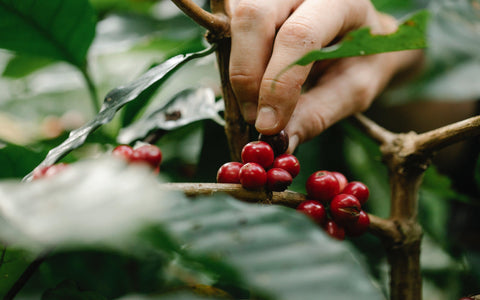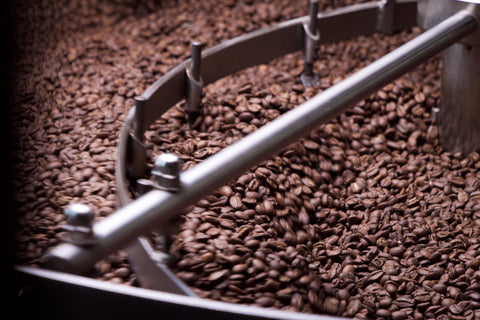
Coffee, a simple yet versatile ingredient, it plays a part in countless lives on this Earth. For some, coffee is a daily ritual, to stay energized and focused; for some it’s a pleasure to enjoy like a glass of fine wine; as for some bravehearts, it’s a livelihood and a career.
Aside from its reliable source of caffeine, coffee has a nature to produce wide variety flavours from fruitiness to floral and chocolate notes, among many others. The multitude of flavours one can experience in a cup of coffee does not come easy. Down to the very last sip of your comforting cuppa, behold the “hands” of resourceful and talented people, those of which are the Farmers, Roasters, and Baristas.
-----
Part One: The Farmer’s Hands

To start on the right note, the story begins with the Farmer’s Hands. Let’s face it, without the farmers planting the coffee seeds, our beloved coffee that we hold in our hands would not be in existence.
More often than not, people tend to forget coffee actually comes from a fruit that grows on a tree. Commonly referred to as coffee “beans'', they are merely seeds of a coffee tree. Despite its humble roots, it's estimated that there are more than 100 types of Coffee trees.
From there, these seeds are planted by the farmers, which usually takes about 3 to 4 years before the trees can start producing the fruit (coffee cherry). Once the trees are able to bear fruits, the ripe coffee cherries will be harvested.
Upon harvesting, the cherries will go through ‘Processing’. Processing is the act of eliminating moisture from the fruit to prevent the coffee from spoiling. Depending on the location and available resources, the coffee will be processed differently. In this short article, we will discuss about two of the more commonly seen/used processing methods in the coffee industry.
-----
1. Natural ( Dry process )
This is the oldest method of coffee processing. After the cherries are picked and cleaned with water, the cherries are then placed on a concrete or brick surface to dry under the sun. To ensure even drying, the cherries are turned regularly by hand. With that, the process usually takes a few weeks. Another aspect to consider when applying this process is the location, where the rainfall is scarce with sunny climates, namely Ethiopia and Brazil. Consequently, this processing method will produce a heavier body, lower acidity, and intensified exotic cup of coffee.
2. Wet ( Washed Process )
This method removes the fruit covering the seed before drying begins. The skin of the cherry and the pulp is separated from the coffee beans by pushing the cherries through a depulper. Along the process, the skin-free coffee beans are put on a dry bed to remove moisture. Wet process is typically preferred because it's easier to control spoilage that occurs during drying. On the other hand, it requires more resources compared to the natural drying process. As a result, coffee from this process will be cleaner, brighter and fruitier.
In the subsequent episode (Part Two), we'll delve deeper into what happens when coffee is in the Hands of The Roaster.





